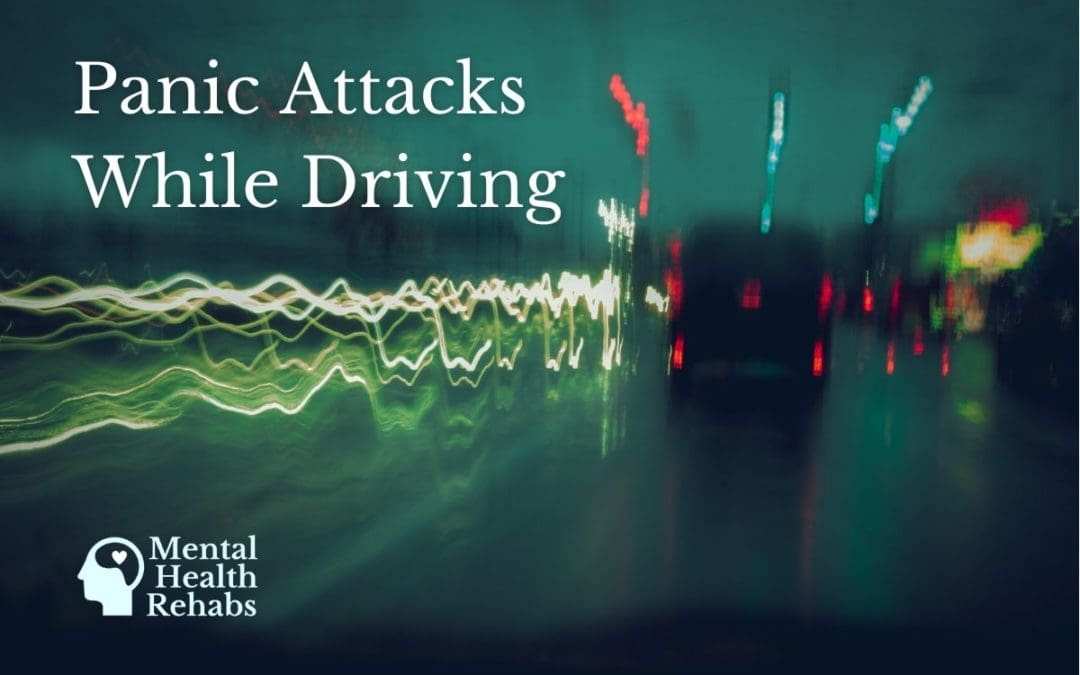No one likes traffic—that’s a given. However, for those who are more sensitive to stress, particularly those with some sort of mental illness, driving can cause our fight-or-flight response to go haywire and trigger a panic attack. Such occurrences can be debilitating and inconvenient no matter where they happen, but they can feel especially harried when someone is experiencing this in the confines of their vehicles. Here are some tips to try for those who have panic attacks while driving, plus on how to stop them from happening and how to avoid anxiety while driving on highways in general.
How To Stop Panic Attacks While Driving
It’s not uncommon to hear of people having panic attacks while driving over bridges, driving at night, or driving over the highways. These driving conditions may trigger phobias or remind us of stressful situations in the past. Whether you find yourself stuck on a jammed highway during rush hour or cruising along a dirt road, employ these tips to get through periods of extreme stress while you’re in the car.
Turn On The Radio
If you don’t have anyone in the car with you to talk you down from your panic attack, use other sources of audio to de-escalate your feelings. Opt for calm music or lighthearted podcasts and audiobooks to stop your mind from racing and give you something else to focus on. If you’re prone to panic attacks, consider making a playlist for such instances. One filled with songs that evoke happy memories or relaxing thoughts.
Use the 3-3-3 Rule
A useful tip for managing any sort of stressful situation, not just panic attacks, is the 3-3-3 rule calls for sensory engagement. A person will first identify three things they can see immediately around them, three things they can hear in that specific moment, and then think about three things they can feel by moving their body parts. Although simple, this rule is a way to quickly bring a panicking individual back into the present rather than running off with their worried thoughts.
Roll Down The Windows
Some of the side effects of a panic attack are sweating, dizziness, and lightheadedness. Rolling down the windows to get some fresh air can help relieve that discomfort. However, the tactile sensation of feeling the breeze on your face is more than just refreshing. It can also be a helpful tool to keep you in the present moment behind the wheel. If the climate outside is uncomfortable, then try blasting the air conditioning instead.
Focus On Breathing
Panic attacks can also cause bouts of hyperventilation or shortness of breath. On their own, neither are considered medical emergencies and are primarily just really uncomfortable. One potential side effect of such, however, is fainting, which behind the wheel can quickly become dangerous. Restoring a normal pattern of breathing is crucial both for feeling better and your immediate safety. There are many types of breathing exercises, all of which have the deliberative intention of slowing down a racing heart rate and centering the mind. Try these exercises from the American Lung Association at home so when a panic attack strikes, you’re already familiar with them.
Pull Over
If nothing seems to be working to curb your anxiety while driving, the safest thing you could do is to pull over and compose yourself. Just be sure that you can do so safely and where you won’t end up in a difficult position to get back onto the road (which could cause your anxiety to flare up all over again). Ideally, pull over someplace you won’t feel rushed or concerned about potentially getting into an accident, like a parking lot or a quiet neighborhood. Here you’ll be able to focus better on yourself and use these anxiety-reducing techniques.
How To Prevent Panic Attacks While Driving
Knowing how to deal with the symptoms of a panic attack is certainly useful, but getting to the root of the issue will improve the overall quality of life in the long run. Taking proactive measures can minimize how often you’ll experience panic attacks while driving.
Practice With Easy Routes
Exposure is a technique often used in combating phobias and other types of anxiety disorders. By acclimating yourself to your trigger, you can better prepare your brain to deal with the resulting feelings of stress. Practice driving with easy, calm routes that you are already familiar with. Practice driving to and from the places you routinely visit, but at off-peak hours to avoid the bulk of traffic. Over time, you will lose at least some of that sensitivity that leads to debilitating and all-encompassing panic attacks.
Seek Treatment
Mental health professionals can help individuals get a better grasp on how to manage a panic disorder. Cognitive-behavioral therapy (CBT) is the primary treatment method, but medications like SSRIs and benzodiazepines can also help lessen the symptoms. Get connected to a mental health rehab near you today.

